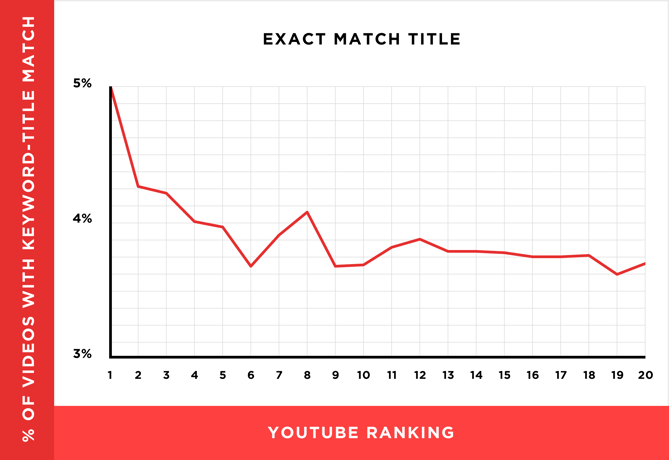Continue with some reasons why nobody views your video content…
5) The title is misleading.
You may know the term “clickbait”: utilizing attractive titles that trick people to click on something, only to take them to content that does not actually have anything to do with the title. That’s an enormous no-no and could result in serious penalties on SEO and certain social media websites. Fb, for instance, announced in May that it would be taking measures to remove clickbait from users’ feeds.
In other words, while it may seem tempting like giving your video a click-worthy title, if it does not truly describe your content, you will finally be punished for it. And even if it does not immediately get you removed from social media channels or lower your SERP ranking, it will tarnish your brand — once the user sees that you are applying misleading titles to your videos, she will likely associate you with unauthentic content.
It additionally just makes sense to have your title closely match what the viewer is looking for — you are making the video content that’s offering a solution to the user’s question. Plus, the analysis conducted by Backlinko discovered that videos with an exact keyword match in the title have a slight benefit over those that do not.
Supply: Backlinko
Lastly, make sure you also keep your title short — HubSpot Content Strategist Alicia Collins recommends limiting it to 60 characters to assist keep it from getting cut off in outcomes pages.
6) You are not optimizing it.
Giving your video an accurate, clear, and concise title is only a part of optimizing it which is also a reason why no one views your video content. Right here’s where YouTube becomes a significant player again since it offers one of the most detailed levels of optimization of most video sharing platforms. Under, we describe a few of the most vital things to optimize on YouTube.
Description
This needs to be limited to 1,000 characters — and keep in mind that your viewer came here to see a video, not to read lots of text. Plus, YouTube only displays the first two or three lines of text, which comes to about 100 characters, so front-load the description with the most important info.
Tags
Utilizing tags does not just let viewers know which your video is about — they inform YouTube, too, which uses tags “to know the content and context of your video,” according to Backlinko. That method, YouTube could associate your video with similar videos, which might broaden your content’s reach. However, approach with caution — just as with your title, do not use misleading tags because they may get you more views — actually, Google may penalize you for that, too.
Category
Selecting a category is another method to group your video with similar content on YouTube — however, that may not be as simple as it sounds. YouTube’s Creator Academy suggests that marketers “think about what’s working well for each category” you are considering by answering questions such as:
- Who’re the top creators within the category? What they are known for, and what they do well.
- Are there any patterns between the viewers of the same channels within a given category?
- Do the videos in a category have share qualities such as production value, length, or format?
7) It does not make the viewer feel anything.
After I have watched a video, I wish to feel something — whether it’s great, sad, amused, or generally better off, I do not wish to feel like I have just totally wasted my time. And while some may label the aforementioned puppy videos as “non-productive,” the truth that they likely improved my mood means that it was not the worst use of a few minutes.
And keep in mind what we mentioned before about people being short on both time and attention? There is nothing that will keep viewers from coming back more than leaving them feeling like they did not gain anything from watching your video content.
Oftentimes, emotions could influence buying decisions, particularly when there is a story involved. So once you make video content, it could help to have an impartial audience preview it before you make it public, like a friend or a colleague from a different department. Keep in mind what the intention was behind the video — was it meant to be useful, moving, or entertaining? Next, after your friend sees it, ask if it made her feel the way you hoped it would. If it did not, ask how or what the video did make her feel. If her response lacks enthusiasm, that is a great indication that it may be time to start over.
And keep in mind: Emotions are what make people wish to share one thing. It is what makes watching video more of an experience than an occurrence, and what will make the viewer want to remark on it to others. So doing what you could to ensure your viewer feels something in response to your video does not just provide her with value — it makes her more likely to share it.
A word of caution, nevertheless: Do not make video content that’s deliberately offensive or meant to cause highly negative emotions just for the sake of having a reaction. Keep in mind, one of the big goals behind all your content, including video, is to associate your brand with something helpful and positively remarkable — not as somebody who makes people feel angry or hurt.
We hope you understood why no one views your video content!


